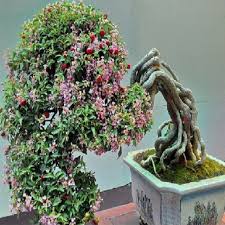The Significance of Giving Gold Paper Offerings During Important Festivals

In many cultures, especially in Asia, certain traditions and customs are upheld to honor ancestors, deities, and spirits during significant festivals and ceremonies. One such tradition is the giving of gold paper (known as vàng mã in Vietnamese), a practice that has deep cultural, spiritual, and historical significance. In this article, we will explore the meaning and importance of giving gold paper offerings during important celebrations, focusing on its role in Vietnamese culture and its connection to broader spiritual practices.
Understanding Gold Paper Offerings (Vàng Mã)
Gold paper offerings, or vàng mã, are ceremonial objects made from paper that are crafted to resemble real-world items, including money, gold bars, clothing, and other valuable goods. These offerings are typically burned during religious ceremonies or festive occasions, particularly during significant cultural and spiritual events like the Lunar New Year (Tết), the Hungry Ghost Festival, and ancestor worship rites.
The burning of vàng mã symbolizes sending offerings to the spirit world, either to ancestors or to deities, to ensure their well-being, prosperity, and protection for the living. This practice is rooted in the belief that the spirit world is an essential part of daily life, and that the connection between the living and the deceased can be strengthened through ritualistic offerings.
The Cultural and Spiritual Significance of Gold Paper Offerings
Honoring Ancestors and Ensuring Their Peace
In Vietnamese culture, as well as in other East Asian cultures, ancestor worship plays a central role in maintaining a connection with past generations. One of the key purposes of giving vàng mã is to honor ancestors and ensure that they are well-provided for in the afterlife. The belief is that burning these offerings allows the spirit of the deceased to receive the material comforts that they were accustomed to while alive.
During major holidays like Tết, families will set up altars to their ancestors, where they present offerings of food, fruits, incense, and vàng mã. These symbolic gifts are meant to show respect and gratitude toward ancestors for their sacrifices and contributions to the family. The act of giving vàng mã is an essential way of maintaining this spiritual relationship and ensuring that the deceased continue to watch over their descendants.
The symbolism behind the gold paper offerings is not just about physical wealth but also about maintaining the honor and legacy of the ancestors. These rituals emphasize the importance of respect for the past, reminding people to remember their heritage and continue honoring those who came before them.
Attracting Prosperity and Good Fortune
Gold paper offerings are also linked to the idea of prosperity, good fortune, and wealth. During festivals like Tết, the tradition of offering vàng mã extends beyond honoring ancestors and can also be seen as a way to attract blessings for the living. In many cultures, gold symbolizes wealth and success, and the burning of paper gold is a symbolic act of attracting financial success and abundance for the family.
The belief is that the more vàng mã offerings made, the greater the blessings one will receive in the coming year. The spiritual connection between the material and the immaterial worlds is thought to influence prosperity, with the offerings believed to please the spirits and gods, resulting in favorable outcomes for the family. This is why vàng mã is often included in offerings during the Lunar New Year, as people wish for a prosperous year ahead.
Connecting with the Divine Realm
In addition to honoring ancestors, vàng mã is used to show respect to the gods and other deities in Vietnamese and other Southeast Asian spiritual practices. It is not only the deceased that receive offerings but also the spirits that protect the living, including household gods and guardian deities. Burning vàng mã offerings is seen as a way of maintaining harmony and balance between the human and divine realms.
During important religious festivals like the Lunar New Year or the Mid-Autumn Festival, families may offer paper replicas of items like gold ingots, luxury goods, and even vehicles to deities. These offerings are meant to show gratitude and to invite blessings for the upcoming year. The gods are believed to take these offerings into their realm, ensuring that the household will receive divine protection, favor, and blessings.
Cleansing Negative Energies
Another significant aspect of giving vàng mã is its role in cleansing negative energies. Spiritual purification is an essential element in many cultural practices, particularly when transitioning from one year to the next. The act of burning vàng mã during key moments in the year is seen as a form of spiritual cleansing, which removes any negative or harmful energy that may have accumulated over the past year.
This cleansing process helps to ensure that the coming year will be filled with peace, prosperity, and positive energy. It is a way to remove obstacles that could hinder success and happiness and to prepare a clean slate for the year ahead.
The Role of Gold Paper Offerings During Major Festivals
Tết (Lunar New Year)
Tết, the Vietnamese Lunar New Year, is one of the most important celebrations in Vietnamese culture. It marks the beginning of the new year and is a time for families to honor their ancestors, reunite with loved ones, and celebrate new beginnings. The practice of giving vàng mã during Tết is deeply ingrained in the celebration, as it is believed to bring good fortune and blessings for the coming year.
During Tết, families prepare elaborate offerings of food, incense, flowers, and vàng mã. These offerings are placed on the family altar as part of the ancestor worship rituals, with the goal of inviting prosperity, health, and happiness into the home. Additionally, it is common for people to visit temples or local shrines to offer vàng mã to deities, seeking divine favor for the year ahead.
The Hungry Ghost Festival (Rằm Tháng Bảy)
The Hungry Ghost Festival, which occurs on the 15th day of the 7th month of the lunar calendar, is another important occasion for giving vàng mã. During this time, it is believed that the spirits of deceased ancestors and wandering souls roam the earth. To appease these spirits and ensure that they are properly cared for, people offer vàng mã as a way of providing for them in the afterlife.
These offerings are seen as a way of showing compassion and respect for the dead, and burning vàng mã during the Hungry Ghost Festival ensures that the spirits will not cause harm or misfortune to the living. The festival is a time for families to reflect on the importance of honoring their ancestors and the spirit world, as well as a time to give thanks for the blessings they have received.
Other Ceremonial Occasions
In addition to Tết and the Hungry Ghost Festival, vàng mã is also used during various ceremonies such as weddings, funerals, and housewarming rituals. In these instances, the offerings are meant to bring good fortune, protection, and happiness to the individuals involved.
For example, during a wedding, vàng mã may be used to ask for divine protection and prosperity for the couple. Similarly, at a funeral, vàng mã offerings are burned to ensure the peaceful journey of the deceased into the afterlife and to help provide for their needs in the spiritual realm.
The Symbolism Behind Gold Paper Offerings
The use of vàng mã is highly symbolic, reflecting the interconnectedness between the physical and spiritual worlds. The burning of gold paper is an act of transference, sending material wealth, goods, and comfort to the spirit world to care for the deceased and divine beings. It symbolizes the cyclical nature of life and death, the flow of prosperity, and the maintenance of relationships between generations.
The act of giving vàng mã also underscores the importance of gratitude, respect, and reverence in many cultural practices. It is a reminder of the connection between the living and the dead and the role that ancestors play in the well-being of their descendants. The offerings also symbolize the wishes for a prosperous and peaceful life, ensuring that families remain united and protected by both spiritual and material wealth.
Conclusion
Gold paper offerings, or vàng mã, hold profound cultural, spiritual, and historical significance, especially during important festivals like Tết and the Hungry Ghost Festival. The practice of offering these symbolic gifts reflects the deep respect and reverence for ancestors, as well as a desire to attract prosperity, health, and divine protection. By honoring the spirits and deities with vàng mã, people not only maintain connections to their past but also invite positive energy and blessings into their lives for the future. In this way, the tradition of giving gold paper offerings continues to be an integral part of many cultural celebrations, fostering peace, harmony, and good fortune for families and communities alike.

